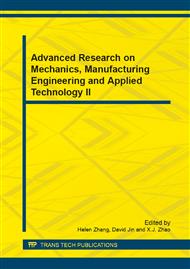p.225
p.229
p.235
p.239
p.243
p.247
p.251
p.255
p.259
Material Properties for Degradation and Reduction of Perfluorinated Acid in Complex Pollution System by Photo-Induced Hydrated Electrons
Abstract:
F, the most electronegative element, is easy to catch the electrons in the bonds to form the stabilized C-F. Perfluorinated acids have high chemical stability which can tolerate acid, alkali, etc. Inhibition effect was observed in the complex pollution system in which 7 kinds of perfluorinated acids existed simultaneously. The formation of hydrated electrons was the rate-limiting step in complex pollution system, and the inhibition was increased as the carbon chain increasing. Compared the reduction rate of perfluorinated acids by photo-induced hydrated electrons in the complex pollution system with the single rate, the results showed that there were positive linear correlations between the degradation rate and photo-induced hydrated electrons. The degradation multiples of perfluorinated acids were studied, it concluded that, because of the competition among the 7 kinds of perfluorinated acids, the degradation rates were influenced.
Info:
Periodical:
Pages:
243-246
Citation:
Online since:
April 2014
Authors:
Price:
Сopyright:
© 2014 Trans Tech Publications Ltd. All Rights Reserved
Share:
Citation:


